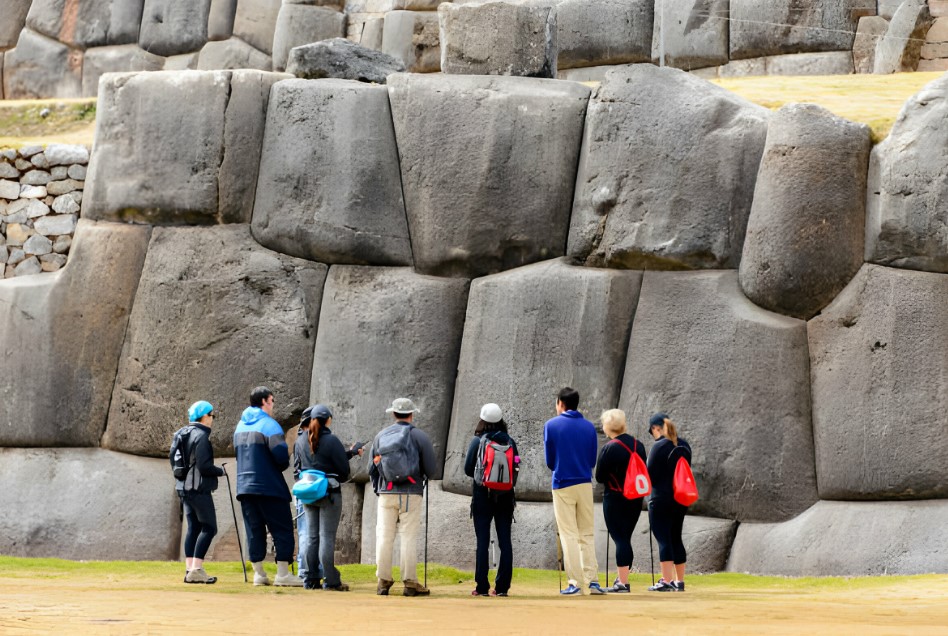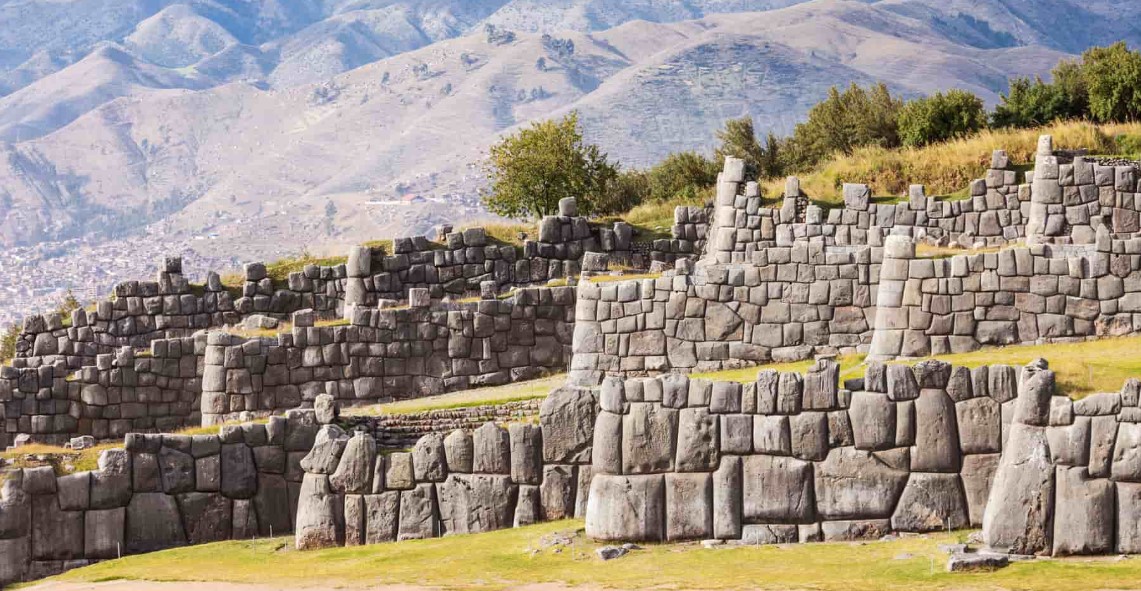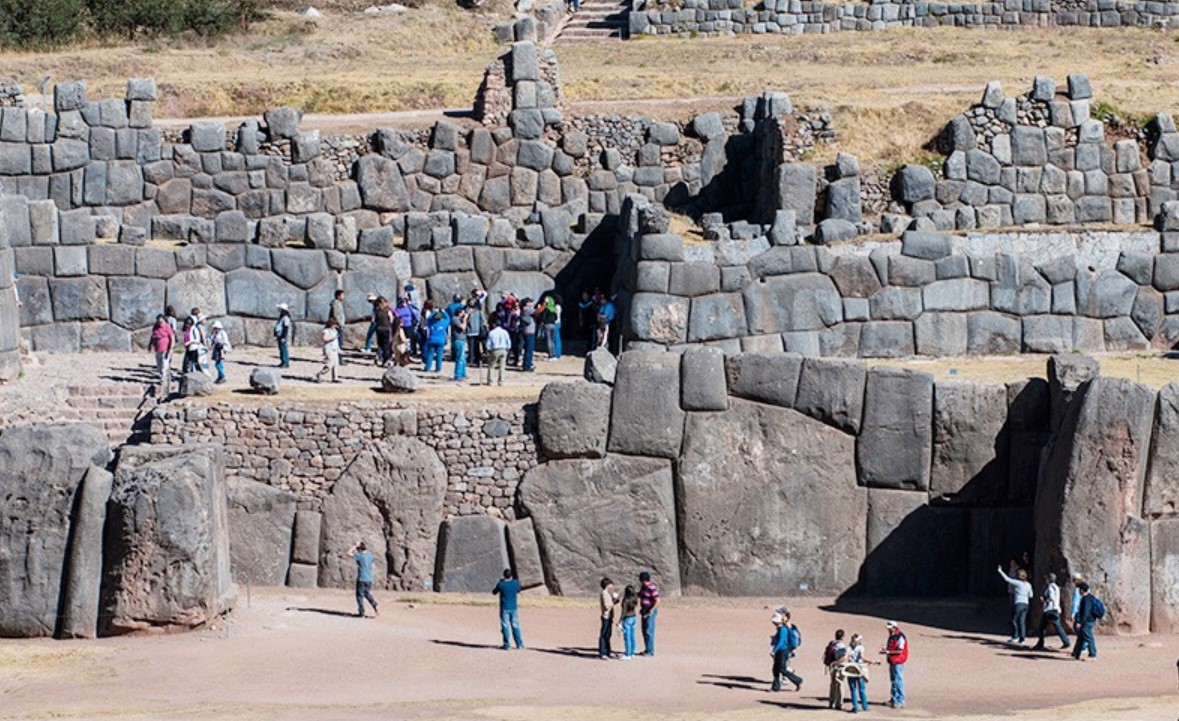The Cyclopean Marvel of Sacsayhuaman
One of the most distinctive features Marvel of Sacsayhuaman is its massive stone walls, constructed with stones weighing up to 200 tons. These stones were cut and shaped with remarkable precision, and without the use of mortar, they fit together seamlessly. This technique, known as cyclopean masonry, involves the use of large, irregularly shaped stones that interlock in such a way that the structure is incredibly stable, even in the face of earthquakes.

Precision Stonework without Mortar
The stones used in Sacsayhuaman are not only massive but also cut with such precision that not even a blade of grass can slip between them. The technique of fitting these stones together without the need for mortar allowed the structure to stand the test of time and resist the seismic activity common in the Andes region. This level of craftsmanship demonstrates the high degree of knowledge and skill possessed by the builders Marvel of Sacsayhuaman
See more: The Mysterious and Abandoned Porto Flavia: A Forgotten Piece of Engineering History
Structural Stability and Earthquake Resistance
The precision with which the stones are cut and interlocked contributes to the site’s structural stability. The interlocking stones create a flexible, yet stable, structure that is able to absorb and dissipate the energy from earthquakes. Peru, particularly the region around Cusco, is prone to frequent seismic activity, and the ability Marvel of Sacsayhuaman walls to withstand such forces speaks to the advanced engineering techniques employed by its builders.

The Role of Cyclopean Masonry in Inca Architecture
While Sacsayhuaman is often attributed to the Inca civilization, the use of cyclopean masonry also appears in other ancient sites in the Andean region, raising questions about the origins of this technique. The walls of Sacsayhuaman were not only a feat of engineering but also a symbol of the power and sophistication of the Inca Empire. The Inca’s ability to combine artistic design with functional architecture allowed them to create structures that would stand for centuries.
Theories on the Builders of Sacsayhuaman
Though many historians and archaeologists credit the Inca with the construction of Sacsayhuaman during the 15th century, there are alternative theories that suggest the site may have been built by an earlier Andean civilization. Some researchers point to the similarity between the construction techniques at Sacsayhuaman and those found at Tiahuanaco (also known as Tiwanaku) in Bolivia, a site that predates the Inca by several centuries.

Pre-Inca Civilizations and Advanced Engineering
The similarities in construction methods between Sacsayhuaman and other ancient sites, such as Tiahuanaco, suggest that the techniques used to build these impressive walls might have been inherited or developed by an earlier Andean culture. The advanced engineering skills displayed at these sites raise the possibility that these civilizations possessed knowledge that has yet to be fully understood. Some believe that a pre-Inca culture, perhaps the Wari or another lesser-known society, may have been the original builders of Sacsayhuaman.
The Inca and Their Contributions
Despite these alternative theories, the Inca civilization is widely credited with completing the construction of Sacsayhuaman, incorporating both pre-existing structures and their own advancements. The Inca were known for their impressive architectural feats, and Sacsayhuaman stands as one of their most iconic contributions. They expanded and reinforced the original structures, turning the site into a powerful symbol of Inca strength and influence over the region.
Unveiling the Past: The Mystery of Sacsayhuaman
The question of who built Sacsayhuaman and when remains one of the enduring mysteries of the ancient world. While the site is generally attributed to the Inca, evidence suggests that it may have undergone multiple phases of construction and renovation. The fact that the construction techniques at Sacsayhuaman closely resemble those of other pre-Inca sites makes it difficult to pinpoint the exact origins of this remarkable fortress.
Sacsayhuaman’s Place in Andean History
Sacsayhuaman is not only an architectural marvel but also a cultural and historical treasure. Its construction reflects the advanced knowledge and capabilities of the Andean people and their ability to create structures that harmonized with the natural landscape. The fortress is part of a larger network of archaeological sites around Cusco, many of which are believed to have been important centers for religious and ceremonial activities.

A Symbol of Inca Power and Identity
For the Inca, Sacsayhuaman was much more than just a military fortification. The site was a symbol of Inca power and authority, a manifestation of the civilization’s ability to conquer and shape the land. The fortress was strategically positioned to overlook the city of Cusco, the Inca capital, and served as a reminder of the empire’s dominance. It is said that the walls of Sacsayhuaman were constructed to resemble the shape of a puma, an animal that held significant cultural and spiritual meaning for the Inca people.
See more:Hezekiah’s Tunnel An Ancient Marvel in Jerusalem
Sacsayhuaman as a Sacred Site
In addition to its military and political significance, Sacsayhuaman held sacred value for the Inca. The site was closely tied to Inca religious practices, and it is believed that it played a central role in important rituals and ceremonies. During the Inti Raymi festival, which honored the Sun God, Sacsayhuaman was a focal point of the celebrations. The fortress was a place of spiritual and cultural significance for the Inca people.
A Legacy of Ancient Engineering
Today, Sacsayhuaman stands as a testament to the engineering brilliance of the ancient Andean civilizations. Whether it was the Inca or an earlier culture that first built the fortress, its construction techniques remain a mystery and an inspiration. The site continues to draw visitors from around the world, who marvel at its architectural precision and the enduring legacy of the Andean people.
Conclusion
Sacsayhuaman is a remarkable site that showcases the advanced engineering and architectural capabilities of the ancient Andean civilizations. The precision with which the massive stones were cut and interlocked, without the use of mortar, remains an incredible feat of construction. Whether built by the Inca or an earlier culture, Sacsayhuaman continues to intrigue and inspire. It is a symbol of the rich cultural heritage of the Andes and a reminder of the enduring power of ancient civilizations.

CÁC TIN KHÁC
Mark Twain & Olivia Langdon: A 36-Year Love Story Filled with Laughter and Devotion
The Tollund Man: A 2,400-Year-Old Mystery Preserved in a Danish Bog
Skara Brae: Scotland’s Hidden Neolithic Village
Porta Nigra: The Hidden Depths of Trier’s Iconic Roman Gate